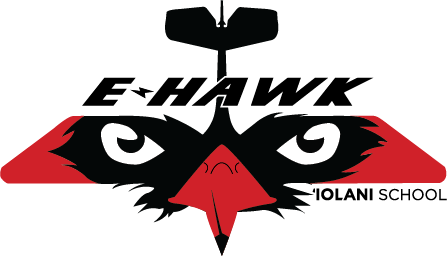Instrumentation Panel and Shroud Assembly
Once our team had developed code for the altimeter, airspeed indicator, and main system displays, we began to develop housing for these electronic components. Our plan was to develop an aluminum panel and plastic shroud to protect displays from sunlight and surrounding electronics from weather. The design process began by researching others’ display systems. We deliberated the orientation of the smaller, 2.2” TFT displays and eventually decided that they should be stacked horizontally to the left of the panel. Along the way, we included mounting holes for rotary encoders that control displays, switches that facilitate the power-up/down sequence, and a fuse holder. The panel was designed initially to mount directly onto a fuselage bar, but we decided after our first assembly prototype that a small plastic clamp that attached onto the fuselage would be a better mounting destination (since we could more accurately mount and avoid modifying the fuselage).
The second point of attachment for the panel is the shroud front piece, which has embedded nuts so that a set of screws can skewer the shroud, panel, and front shroud piece together to create a rigid assembly that slots on to the keel tube. Another piece that we developed for this first panel/shroud assembly was a cover piece that ensures the user can only see the desired areas of the displays and no extra metal frames. The final piece is a long plastic rectangle (“keel holder”) with a dovetail that slots into the empty space between the shroud/front piece and the keel tube to ensure that the shroud assembly doesn’t lift above or fall below the keel tube.
For our second and final assembly, we decided to make minor changes to each of the parts listed previously. We thinned the shroud piece to reduce its weight and smoothed its top surface to allow for a better interface with the keel holder. We then extended the keel holder through the shroud and front pieces as well as removed its rugged front face. Initially, we divided the keel holder into three pieces and used interlocking plastic parts to connect them into one piece, but we found that printing such a long part would be possible and did that instead.
The front shroud piece also underwent shape modifications, and we used a variety of lofts in Onshape to do this. We printed and used the plastic clamping piece that would interface with both the fuselage and the panel for better mounting. This piece eventually found a secondary purpose as a radio holder. Lastly, we cut the cover and panel pieces out of 1/16” aluminum and etched labels / the E-Hawk logo into them once their matte-black paint dried.
Currently, we are able to run a start-up sequence using the three power switches to the bottom left of the panel (from its front view). We are also able to use the rotary encoder to the right to determine whether or not a button press will reset the Ah/kWh readings or toggle the SD card read state. Overall, we will move forward with this instrumentation panel/shroud system and make minor adjustments along the way (e.x. adding labelling for a strobe light switch). Work in the coming weeks will consist of finalizing our PCB designs, shipping them out, assembling them, and integrating them into this assembly.
















